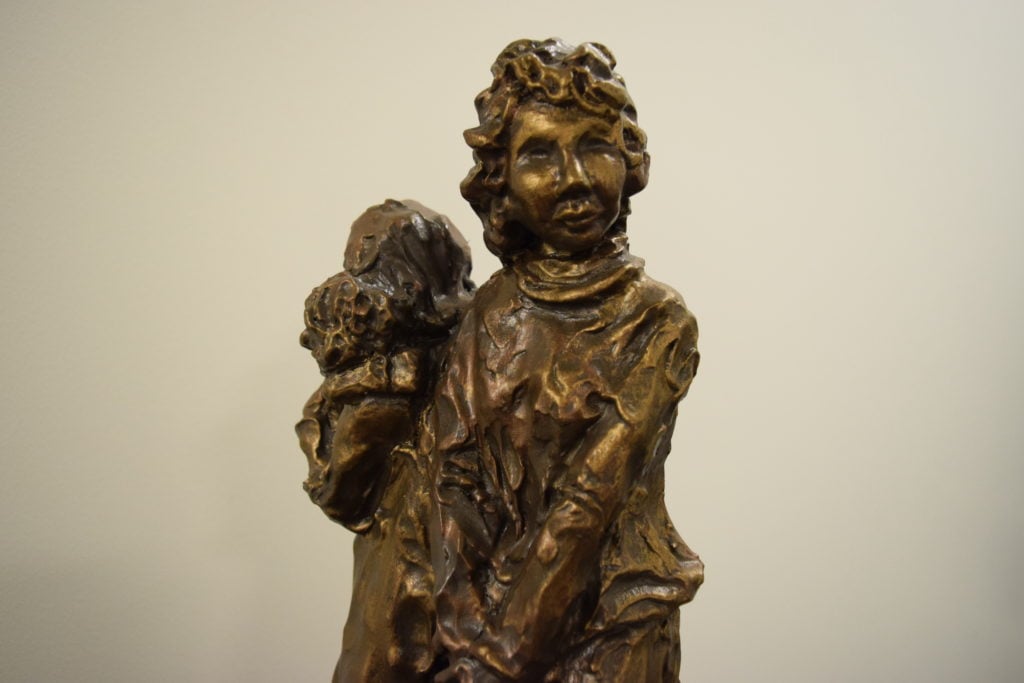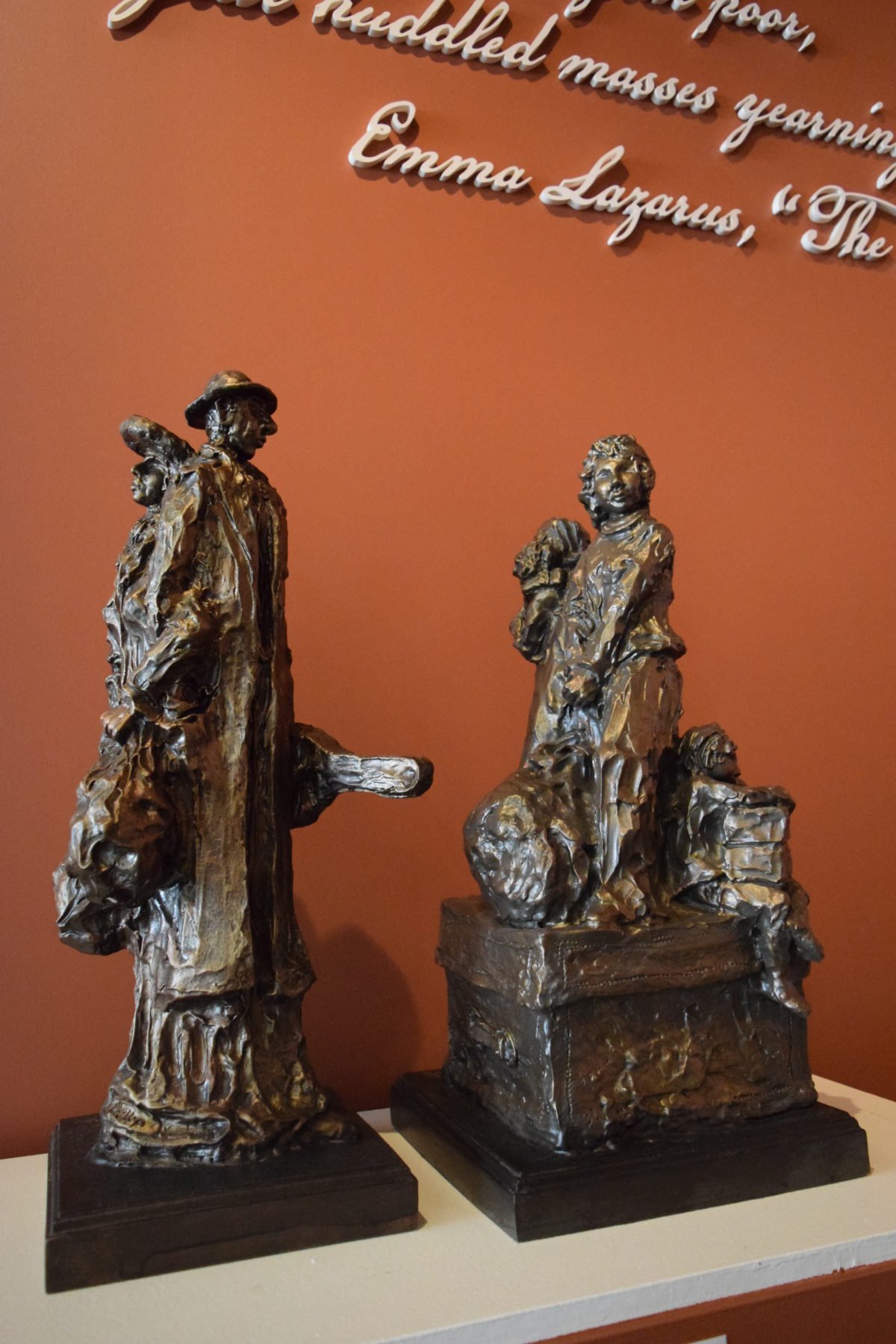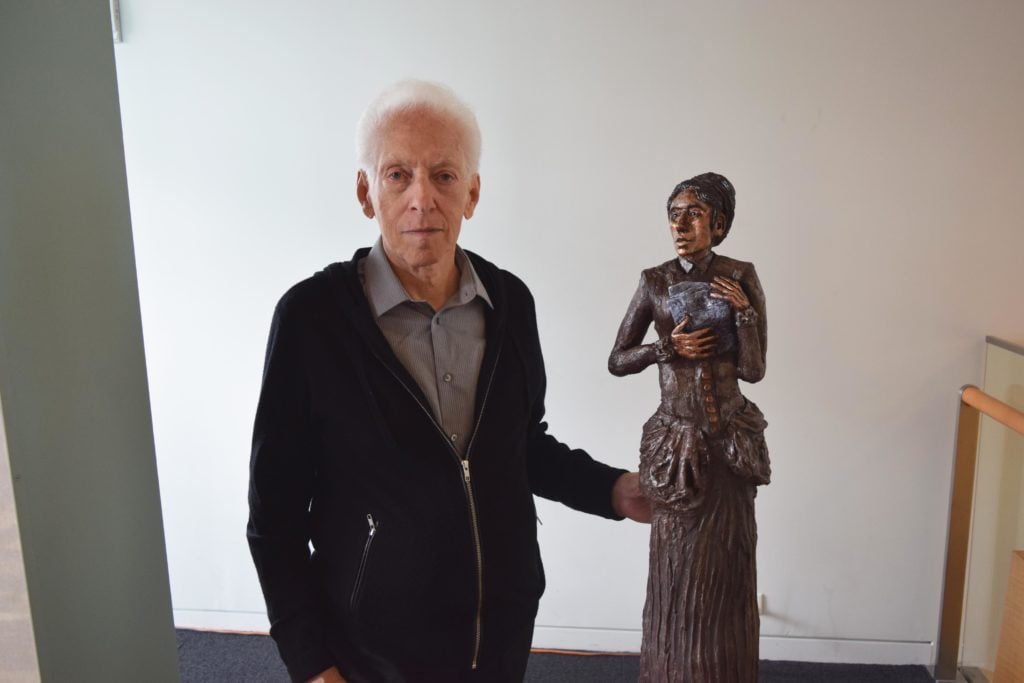On View
Jewish History Museum Acquires Sculpture Models of Ellis Island’s Powerful Monument to Immigrants
Phillip Ratner's sculptures have graced Ellis and Liberty Islands since 1982.

Phillip Ratner's sculptures have graced Ellis and Liberty Islands since 1982.

Sarah Cascone

Since 1982, visitors to New York’s biggest artwork, the Statue of Liberty, and to nearby Ellis Island, have also been greeted by sculptures by Phillip Ratner, including Ellis Island Immigrants, a smaller monument depicting those who have come to this country seeking a better life. Now, the artist has donated the models for 10 of these works to the National Museum of American Jewish History (NMAJH) in Philadelphia.
“Telling the story of my grandparents coming to this country and making it their home—a story that connects many Americans—is a passion of mine,” said Ratner in a statement. “I am thrilled to see these works on view at NMAJH, especially at a time when our nation’s stance on immigration is a constant news headline.”
The works each measure 24 inches tall and represent the millions of immigrants who entered this country through Ellis Island between 1892 and 1954. Each one is a model for one of the eight Ratner statues on Ellis Island, and both versions were cast from metal from the interior of the Statue of Liberty. The iron armature designed by Gustave Eiffel was badly corroded by the early 1980s and was entirely replaced during restorations, yielding ample material for Ratner’s work.

Phillip Ratner, model for his Ellis Island Immigrants. Courtesy of the National Museum of American Jewish History.
Inside the Ellis Island Immigration Museum, there are 33 smaller works on the theme by Ratner. The larger versions were originally installed in the base of the Statue of Liberty, where the museum resided until Ellis Island opened to the public in 1990.
Today, they stand outside the museum, near the American Immigrant Wall of Honor, which currently memorializes the names of some 700,000 immigrants to this country: people of every ethnicity, stretching back from the present day to colonial times. Accordingly, Ratner’s sculptures portray men and women young and old, rich and poor, and of many nationalities.
The project came together after the artist was encouraged to reach out to the National Park Service about making immigration-themed artwork for the government. The park service suggested Liberty and Ellis Islands as the site of the work and helped arrange a tour of the model statues to help raise money for the then-ongoing restoration efforts. Ratner had to raise the funds for the sculptures himself—luckily, he quickly found the necessary support, even without modern crowdfunding aids.
In addition to the immigration-themed works, the National Park Service also commissioned Ratner to create life-size sculptures of the five founders of Liberty Island: Eiffel; sculptor Frederick Auguste Bartholdi; Edward Rene de la Boulaye, who gave Bartholdi the idea of a massive sculpture as a gift from France to the US; Joseph Pulitzer, who raised the funding to build the base; and, Emma Lazarus, who wrote the poem, “The New Colossus,” inscribed on Lady Liberty’s base.

Phillip Ratner with his sculpture of Emma Lazarus (2017). Courtesy of the National Museum of American Jewish History.
The donation also includes a new 36-inch-tall version of the statue of Lazarus, who was born to a Sephardic-Ashkenazi Jewish family and became an important proponent of the formation of a Jewish homeland years before the Zionist movement officially took shape. The piece is a gift of Barbara and Dennis Davison.
At the NMAJH, the statues will be on view at the “Dreams of Freedom” gallery on the third floor, and free-of-charge on the first floor.